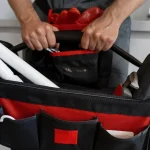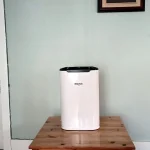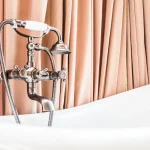Removing a recessed faucet aerator without a key might seem daunting, but it’s manageable with the right tools and techniques. Whether you need to clean or replace the aerator, this guide will provide step-by-step instructions to help you achieve your goal. We’ll also include expert tips to ensure the process is easy to follow and effective.
What is a Faucet Aerator?
A faucet aerator is a small device attached to the end of a faucet. It mixes air with water, reducing water flow while maintaining pressure. This helps conserve water and reduce splashing. Over time, aerators can become clogged with mineral deposits, reducing water flow and necessitating removal for cleaning or replacement.
Tools You’ll Need
Before starting, gather the necessary tools:
- Rubber gloves
- Pliers
- A soft cloth or rag
- A small flathead screwdriver
- A penetrating lubricant (like WD-40)
- A heat source (such as a hairdryer)
Step-by-Step Guide
1. Preparation
Start by putting on rubber gloves to protect your hands and improve your grip on the faucet. Place a soft cloth or rag over the sink to prevent any small parts from falling down the drain.
2. Use Pliers Carefully
Using pliers is a common method for removing a recessed faucet aerator without a key. However, caution is essential to avoid damaging the faucet.
- Wrap the Faucet: Wrap a soft cloth around the faucet tip to prevent scratches.
- Grip with Pliers: Gently grip the aerator with the pliers, ensuring you don’t squeeze too hard.
- Twist Counterclockwise: Turn the aerator counterclockwise to loosen it. If it doesn’t budge, don’t force it, as this could cause damage.
Expert Tip: The Spruce advises, “Pliers can be a helpful tool for removing a recessed aerator, but use caution to avoid damaging the faucet.”
3. Apply Penetrating Lubricant
If the aerator is stuck, applying a penetrating lubricant can help loosen it.
- Spray Lubricant: Spray the lubricant around the aerator’s edges.
- Wait: Allow the lubricant to sit for a few minutes to penetrate and loosen any mineral deposits.
- Try Again: Use the pliers again to attempt removal.
Expert Tip: DIY Network recommends, “If pliers don’t work, consider using a penetrating lubricant or applying gentle heat to loosen the aerator.”
4. Apply Gentle Heat
If the aerator still won’t budge, applying heat can expand the metal slightly, making it easier to remove.
- Heat the Aerator: Use a hairdryer to gently heat the aerator for a few minutes.
- Retry Removal: Use the pliers to attempt removal again after heating.
5. Use a Flathead Screwdriver
A small flathead screwdriver can be useful for prying out a recessed aerator.
- Insert the Screwdriver: Insert the flathead screwdriver into one of the notches or holes on the aerator.
- Pry Gently: Apply gentle pressure to pry the aerator loose. Be cautious to avoid damaging the aerator or faucet.
6. Seek Alternative Tools
Many home improvement stores sell specific tools for aerator removal, which can be a helpful alternative to using pliers.
- Visit a Store: Visit a store like Home Depot or Lowe’s and look for an aerator removal tool.
- Ask for Advice: Ask a staff member for advice on selecting the right tool for your faucet type.
Expert Tip: Home Depot suggests, “Many home improvement stores sell aerator removal tools that can be a helpful alternative to using pliers.”
Maintenance Tips
Once you’ve successfully removed the aerator, it’s essential to maintain it properly to prevent future issues.
Cleaning the Aerator
- Soak in Vinegar: Soak the aerator in white vinegar for an hour to dissolve mineral deposits.
- Scrub Gently: Use an old toothbrush to scrub away any remaining debris.
- Rinse Thoroughly: Rinse the aerator under running water before reattaching it.
Regular Inspection
Inspect the aerator regularly for signs of clogging or damage. This can help you address minor issues before they become significant problems.
Expert Quote: Plumber’s Helper emphasizes, “Regularly inspecting and maintaining your faucet aerator can extend its lifespan and ensure optimal water flow.”
Reattaching the Aerator
When reattaching the aerator, ensure it’s screwed on securely but not too tightly. Over-tightening can make future removal more difficult.
Conclusion
Removing a recessed faucet aerator without a key is a manageable task with the right approach. Whether you use pliers, penetrating lubricant, heat, or a specialized tool, patience and care are essential to avoid damage. Regular maintenance and inspection can prevent future issues and keep your faucet functioning smoothly.










